Some airlines, however, still charge exorbitantly for bicycles that exceed the regulation size (157 linear cm for most flights). Some recent airlines I’ve flown recently include United Airlines and Aero Mexico. For airlines like this, you’ll either have to pay up to US$200 one-way for the bike, or try to fit the bike into a regulation-sized package.
This is where a small-wheeled folding bike comes into it’s own. Even a long-wheelbase, touring-oriented Tern Verge S27h folding bike (see my review here) fits into a regulation suitcase in less than 30 minutes. You can have your cake and eat it too.
Fitting a folding bike into a suitcase for the first time, however, is sort of like doing a jigsaw puzzle. So here, I’ve outlined how I managed to fit Tern Bicycle’s flagship touring folder into a cheap, very run-of-the-mill suitcase.
Suitcase size
Mine was a 75cm x 31cm x 50cm semi-rigid suitcase. To be honest, the size was less than ideal. A few extra centimeters in width would have been helpful. Being a semi-rigid case, however, I was able to force the case to accept the bike. The suitcase weighed 4kg when empty. Other options for suitcases include Tern’s Airporter, but the total linear dimensions of that case are 192cm, and this makes me reluctant to use it. It would only take one over-zealous check-in staff member to cost you US$200. That said, the Airporter option is super attractive, as there is much less disassembly required. Bike Friday also produces an awesome suitcase-tralier option which would allow me to ride away from the airport (I love being able to do this after a long flight), rather than having to lug the heavy suitcase to accommodation. The wheels etc add weight to the entire package though.
Total package weight
Including the suitcase, padding (tarp, cardboard, and foam pipe insulation), bike (Shimano Alfine 11-speed internal gear hub equipped) with no rear rack, tools, pedals, and locks, the total weight was 23.3kg. Add the collapsable Tern Cargo rack, and you’re probably looking at something around the 24kg mark. Remove the locks and add them to carry-on baggage, and you’ll be within the 23kg limit.
Packing
Step One
Remove the rear wheel, front wheel, mudguards, front and rear racks, kick-stand, seatpost, seat, handlebars, stem, and front forks. Collapse the Tern Cargo rack. Deflate the tires to reduce the diameter of the wheels; the Schwalbe Big Apple 2.15 tires are big! With a slightly wider and deeper suitcase, I think I would not have needed to remove the saddle from the seatpost, nor the handlebars from the stem, nor deflate the tires. If you’re using the standard (and in my opinion sub-optimal) DualDrive setup, you’ll need to remove the rear derailleur also. To avoid the rear triangle being crushed, make sure to insert a pipe secured by a quick-release or something similar. My pipe is made from cheap PVC tubing cut to the right length.
Step Two
Place the saddle, padded seatpost and stem, and Spartan rack on the outer bottom of the suitcase. Next place the rear wheel on the bottom right-hand-side of the suitcase, with mudguards around the tire. It is highly recommended to remove the disk brake rotors, to avoid them getting bent. To protect the bottom of the suitcase, a plastic axle disk is recommended.
Step Three
Fold the tarp over this layer. Place the handlebars at the top. Place the folded main frame into the suitcase top-tube down, with the rear triangle at the left bottom. Slide a piece of cardboard between the top tube and handlebars to protect against rubbing. The forks can now be slid into the rear triangle. Make sure to pad all metal-on-metal contact points with cardboard or foam. In particular take care to pad the area where the axle on the rear axle protrudes; I missed this point on my first try and ended up with some serious gouging on the seat tube.
Step Four
Fold the tarp over this second layer, and lay the front wheel down. Once again, better to remove the disk brake rotor to avoid it getting bent. Make sure there’s a generous layer of cardboard or other padding between the bottom of the wheel and top of the wheel.
Step Five
Cram that suitcase closed, and use a suitcase strap to reduce load on the zippers, and to keep everything in place.
Step Six
Fly to your destination store that suitcase somewhere, and go for a rice (in my case this was southern Mexico).


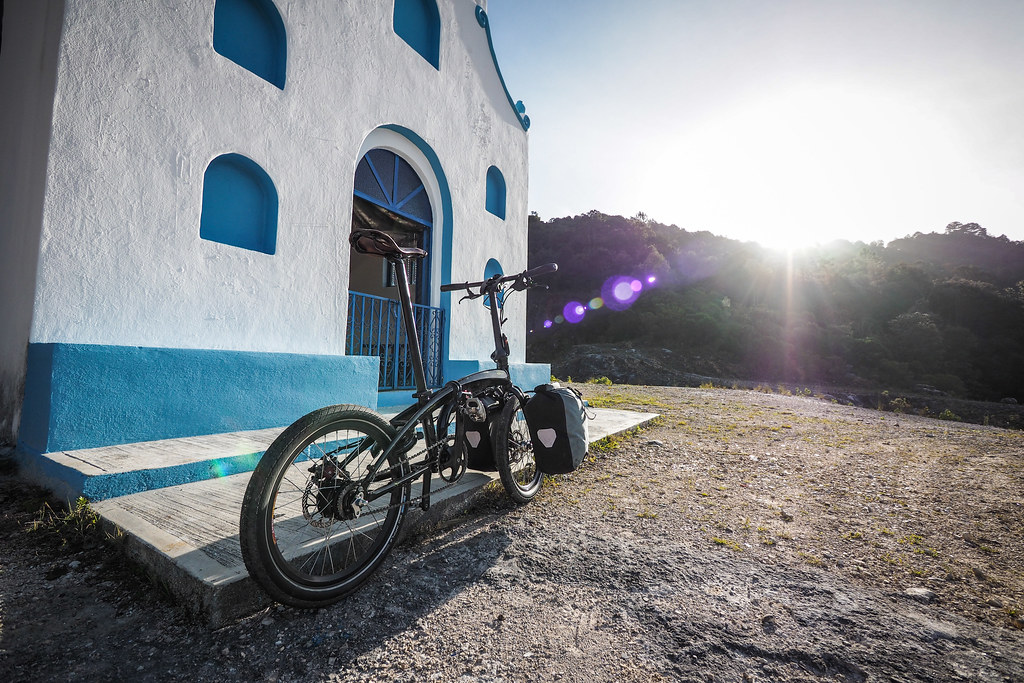
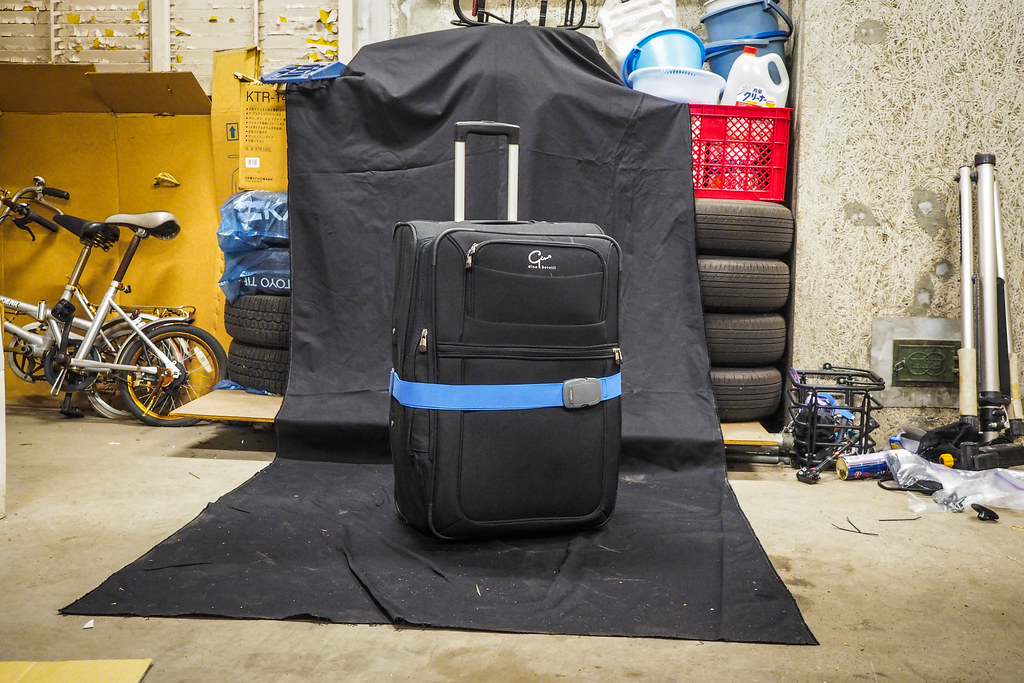
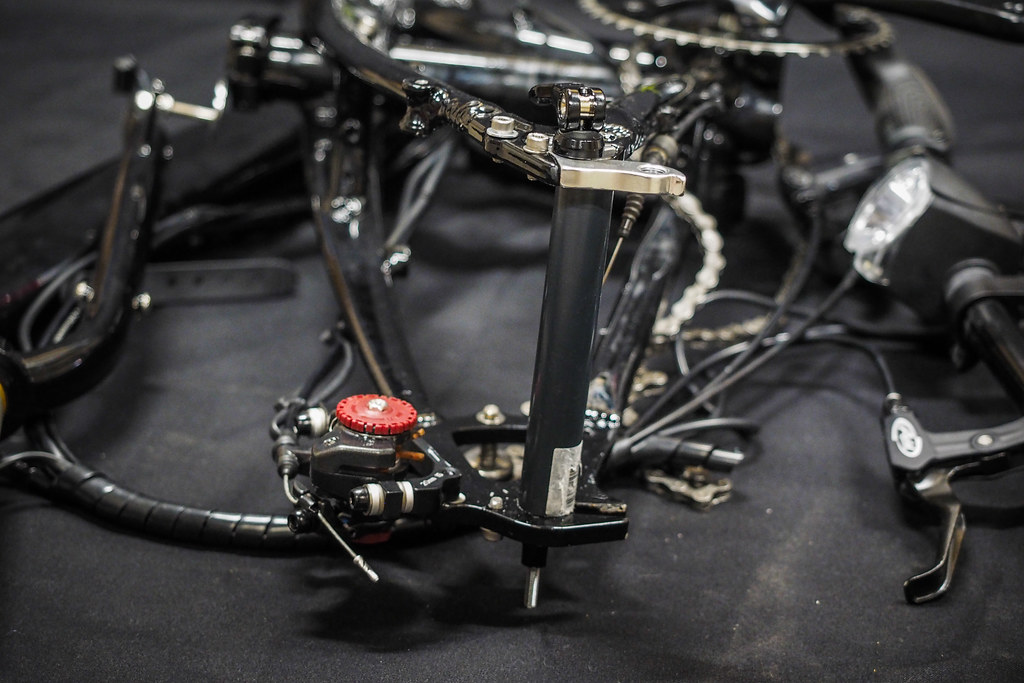
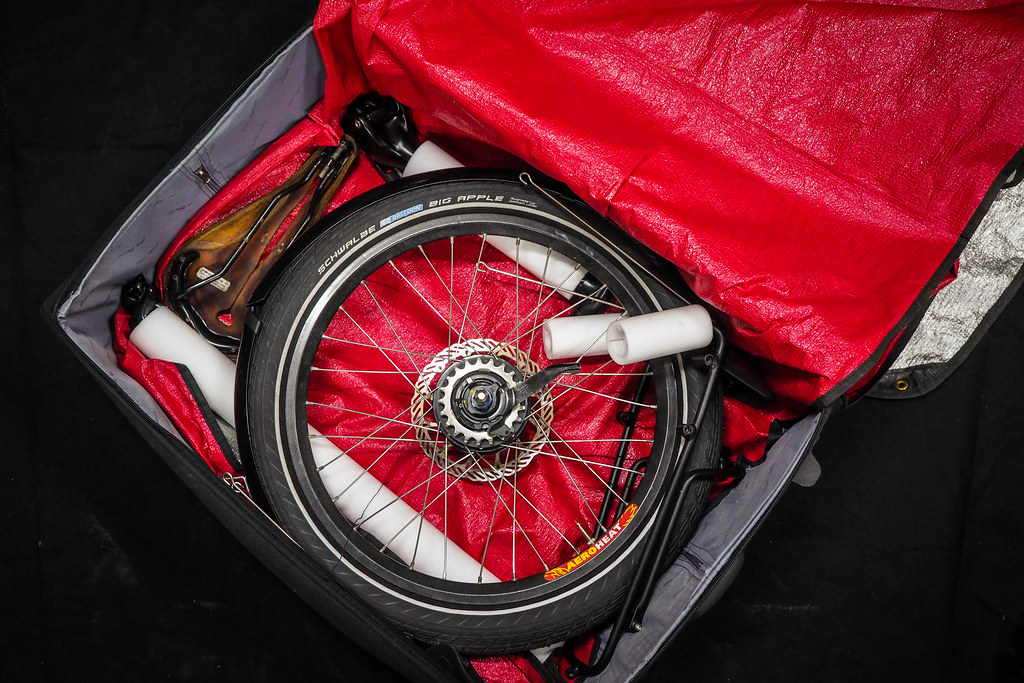
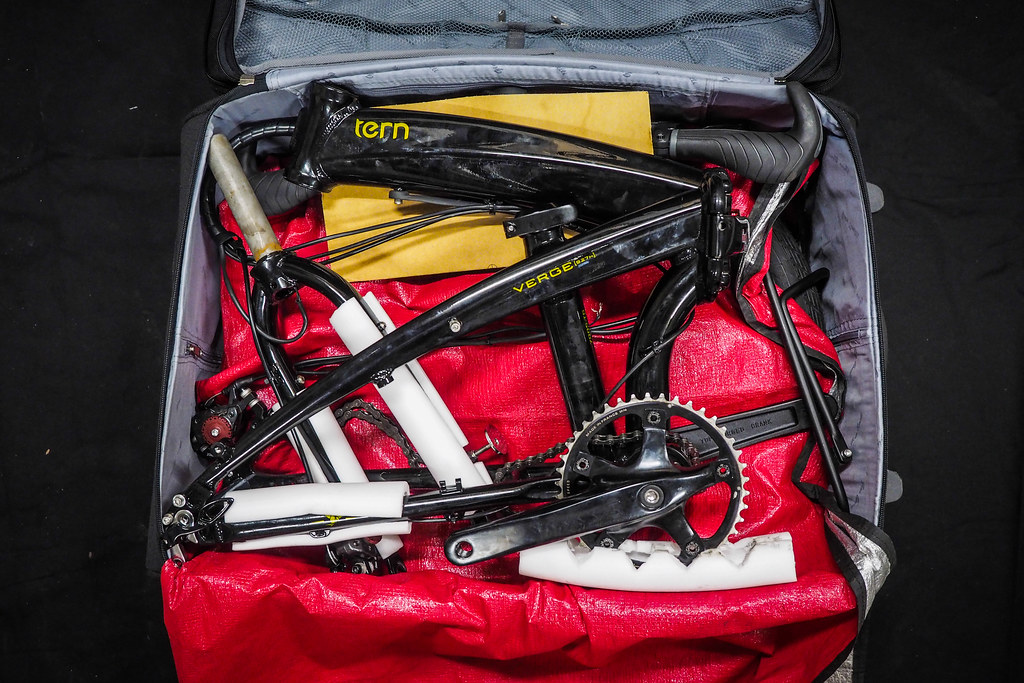
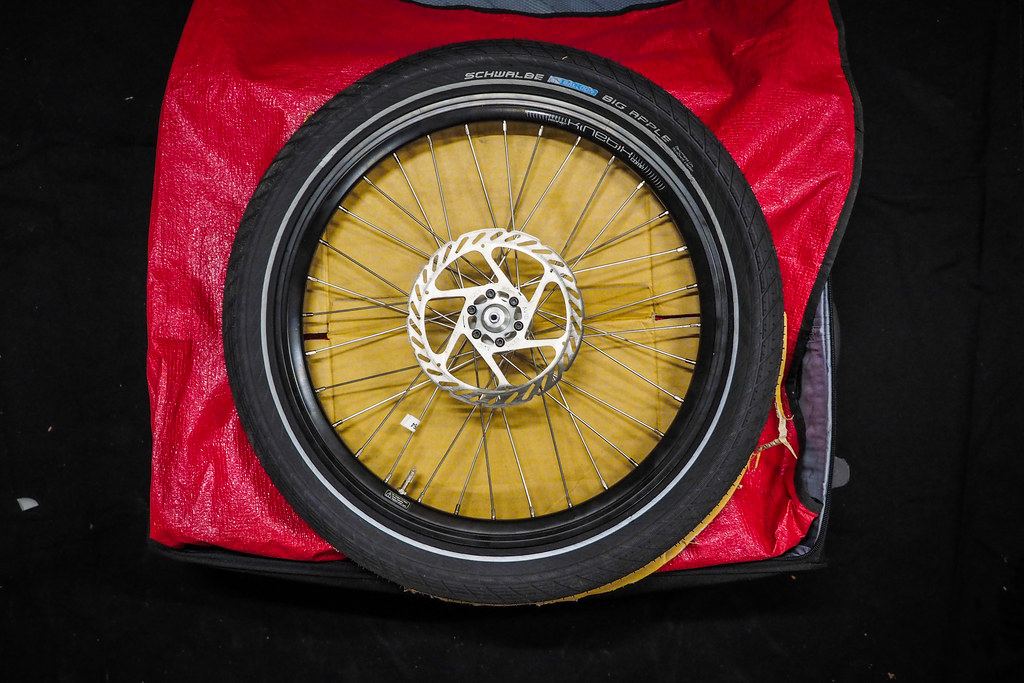

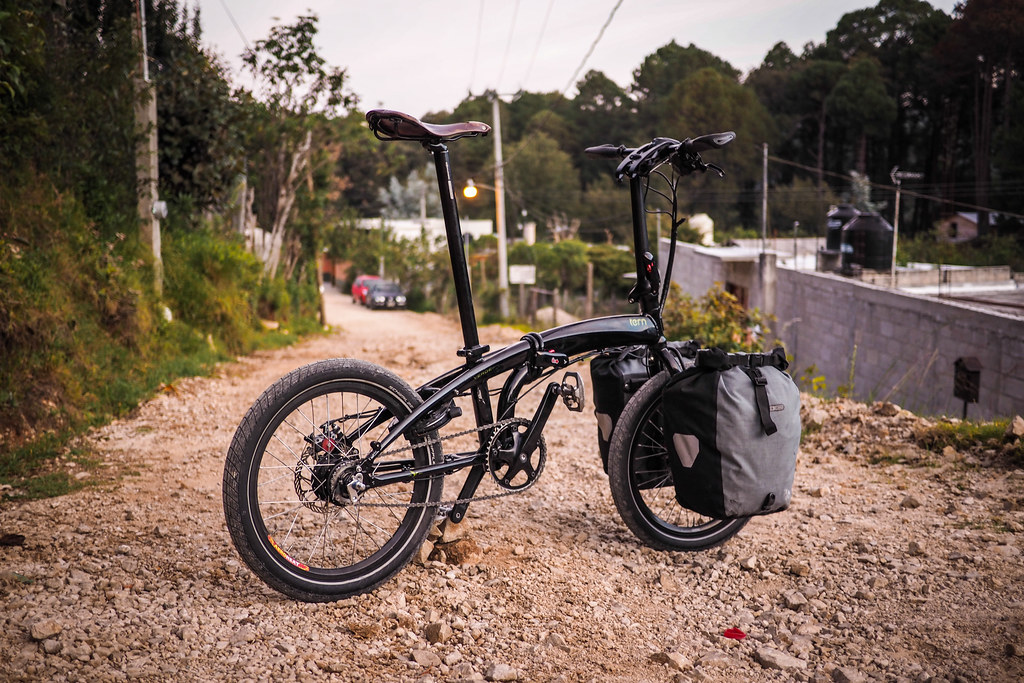





6 thoughts on “Packing a Tern Verge S27h Folding Bicycle into a Suitcase”
Airporter MINI fits regulations but have different proportions
https://www.ternbicycles.com/ca/gear/471/airporter-mini?fbclid=IwAR0d_97mshbn0r00xyn2UTTjBzp0yjSxum1L2z0Ox2cc9p4HBpNRoGnIuEs
Thanks for that Roman.
Great write up! I have a tern Verge tour second edition and will be using this guide to pack it.
I do agree that the dual drive is sub optimal. It shifts VERY well but the drive box is painful to set back up when taking the wheel off.
Typically where do you store your suitcase(s)? At the airport?
Hey Matt – good luck on your packing efforts! Typically I don’t travel with the bike in a suitcase – I generally choose airlines which allow bikes as sporting goods. On the one occasion that I did take the bike in a suitcase (from Japan to Mexico), I wasn’t touring. It was a conference trip. So I just kept the suitcase in my hotel room.
Hi Rob,
I am the happy owner of a s27h and was searching for information on packing it for air travel only to find your blog. I used to read when you were underway on the bike/skate world extravaganza. So, nice to be back in touch!!
After also using a stowbag for an Australia – Italy rtn flight last month and getting damage in both directions, it’s time to sort out a suitcase.
Can you give me any info on removal of the handlebars/stem and fork? Is is easy to do and how? The info on the Tern website has not helped me because I don’t know what some of these things are called!!
https://www.ternbicycles.com/node/162101
If you have time to help out, it would be grand.
Also I am inspired by the Alfine 11/chainglider idea – thanks for that. Currently getting the changeover costed up by the LBS. Given I need to do repairs to so much of the gear setup anyway…
Awesome bike for touring though.
Catherine
Hey Rob,
Caught up with your website again after many years (I followed much of your bike/skateboard journey at the time), because I am the proud newish owner of a Tern s27h, and was looking up packing options. Loving the bike – hard to believe when on it that it is a folder with 20″ wheels.
Last month I used the Stow Bag between Australia and Italy and spent two weeks cycling before a silent film festival. The flights in both directions caused some damage to the bike, so I am looking more seriously at suitcases… Thanks for this post – ideal!
What does it involve to remove the handlebar/stem and fork? The instructions on the Tern website ( https://www.ternbicycles.com/node/162101 ) gloss over the specifics! I assume there is a headset in there somewhere? Any information you can provide would be welcome!
Great to see you are still taking great photos and telling good stories. (Also you have given me ideas seeing your gearing set-up!)
Cheers,
Catherine